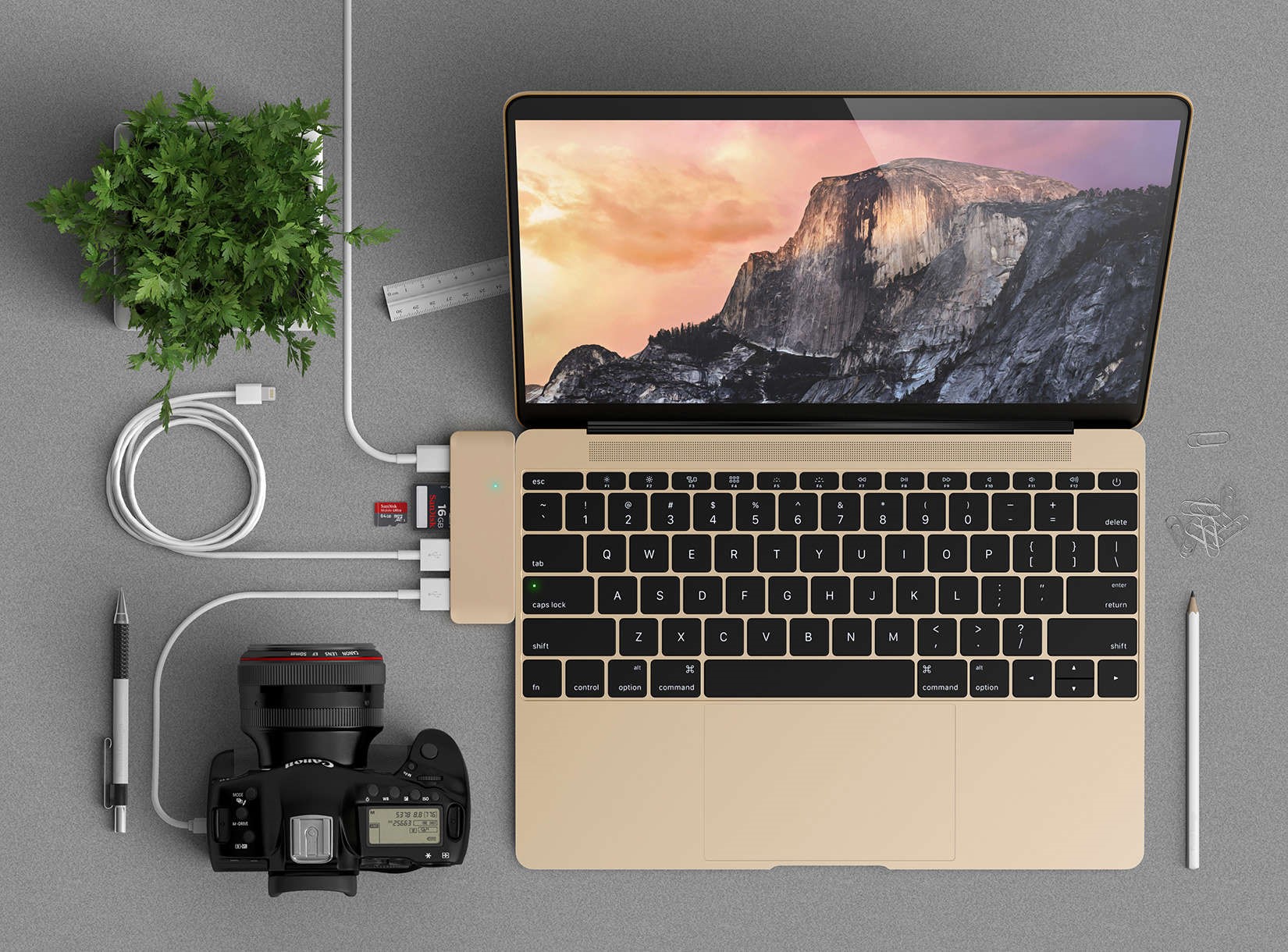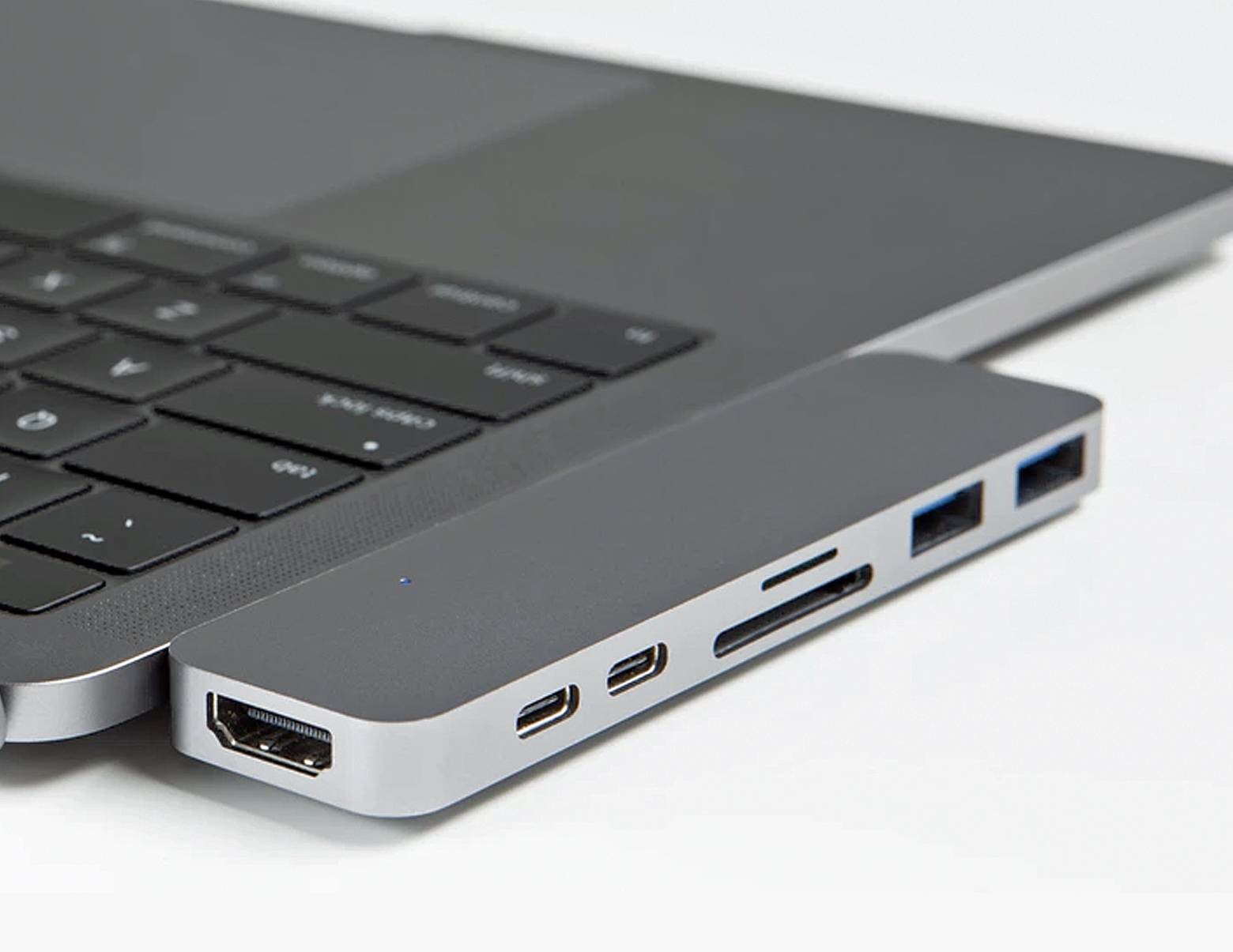The USB-C docking station is the most famous connection today. It is standard for exchanging data and for connecting peripherals, such as USB sticks, printers, external hard drives, and many more. USB has the advantage of being “plug & play”, that is to say, that as soon as the peripheral is connected, communication is established automatically between the device and the computer.
Over the years, USB has evolved to offer better speeds.
– USB 1.1 (commonly called USB Full Speed) offers a maximum speed of 12 Mbit / s. It is now abandoned.
– USB 2.0 (High Speed) theoretical speed of 480 Mbit/s, or about 40 MB / s in practice. It is sometimes still present on some laptops full of faster ports.
– USB 3.1 gen 1 (formerly called USB 3.0) has now become the standard and is therefore present on almost all laptops on the market. This new standard supports a maximum throughput of 5 Gbit / s or a practical throughput of around 300 MB / s.
– USB 3.1 gen 2 benefits from a higher bandwidth allowing a theoretical maximum speed of 10 Gbit / s, or around 1 Gb / s in practice. USB Type-A 3.1 gen2 ports are mainly present on gaming laptops.
– USB 3.2 is the new standard in the making. The speed is once again doubled, ie 20 Gbit / s. No laptop PC currently offers this port (November 2019).
USB-C / Adapter and Hub:
Some adapters offer USB-C or ports as a connection. For many, this is a barrier to purchasing since the traditional USB-A and HDMI USB C adapter ports are then absent.
However, and even if this type of situation may appear to be a disadvantage at first glance, in practice, it is not insurmountable by accepting to adapt their habits. So, to occasionally connect a device with a “classic” USB port, a small USB-C to USB-A adapter will remain permanently at the bottom of your bag for the always have on hand. For HDMI, there are also HDMI to USB-C adapters or more simply HDMI to USB-C cables.
You can also opt for more complete models with more ports and/or more “sophisticated” with, for example, a USB-C docking station compatible with Power Delivery, i.e. capable of supporting the mains supply. You can also enjoy a 4K/UHD compatible HDMI port.
Be careful if this point is important for you, be sure to check that the HDMI port supports 4K screens at 60 Hz. A rare characteristic presents only on the most expensive hubs, the others being satisfied with a 30 Hz output.
A price that may seem high but you quickly get a taste of connecting your screen, hard drive, network cable while powering your computer (be careful if you need more than 45W, compatible hubs are very rare) simply by plugging in a cable when you arrive at the office.
USB-C docking station:
In the same vein, but if you need more ports available, the solution is to opt for a USB-C docking station. The concept is not new, but in the past docking stations used proprietary ports that were compatible, at best, with a single brand.
The generalization of USB-C has made it possible to standardize the market. Computer brands still offer their own USB-C Mac USB C Dock stations, but nothing now prevents you from using them with a laptop PC from another brand.
Besides the number of ports, when choosing, one should pay attention to several things. The first is not to opt for a 3 dock station if your computer does not have this connection.
Conversely, a USB-C docking station will work with a laptop computer with 3 dock ports. Simply, you will not take advantage of the full potential of the TB3. The main limit will be to look for on the side of the definition and the refresh rate of the screens connected to the station. A USB-C model will only be able to connect a single UHD / 4K 60Hz display or two Full HD / 1440p displays.
If you have multiple displays to connect simultaneously, only a Mac USB C Dock will do the trick. And again, check the specifications carefully with the purchase, many TB3 stations only offer 60 Hz with a single screen.
Apart from the technical sheets of each laptop PC, it is often impossible to know which standard is supported by a USB Type-A port. Some manufacturers sometimes affix a “10” next to the port.
Whatever the standard of the HDMI USB C adapter presents on your computer, they are always backward compatible. This means that you can plug a USB 2.0 hard drive into a USB 3.0 port.

